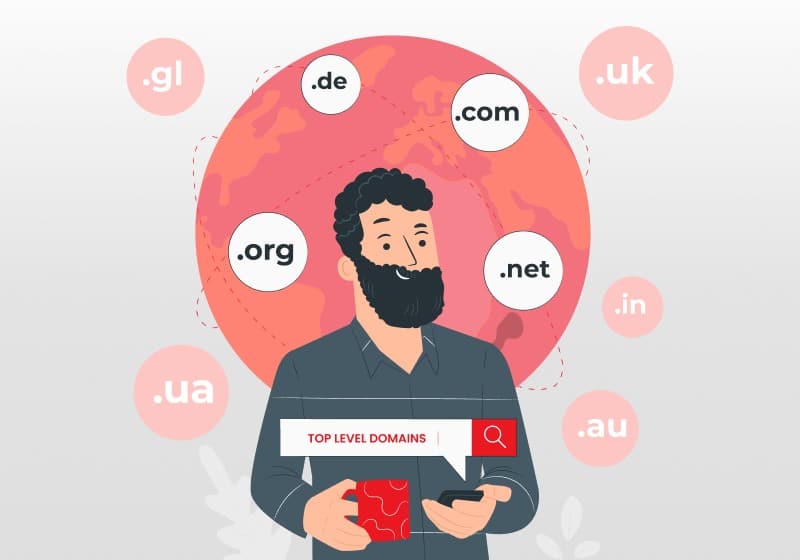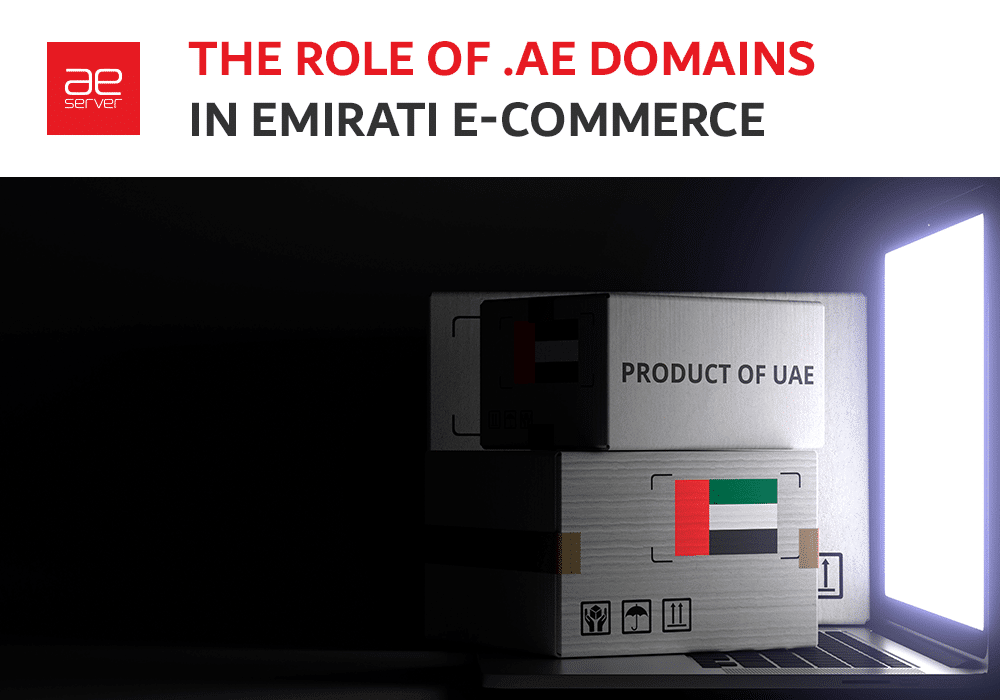
The List of the Top Level Domains(TLD)
In the vast and ever-expanding landscape of the internet, understanding the nuances of domain names is crucial for anyone navigating the digital realm.
At the core of this web addressing system are Top-Level Domains (TLDs). They play a pivotal role in defining a website’s identity and functionality.
This article aims to explore the diverse world of TLDs. It will highlight their types, significance, and impact on SEO and online branding. Stay with us. Read the article to the end to get your business’s valuable information.
What Are Top Level Domains?
Top Level Domains (TLDs) play a crucial role in the structure of the internet. These are the last segments of a domain name, appearing after the final dot, such as .com, .org, or .net. TLDs categorize websites into different groups, indicating their purpose or origin. Commonly, TLDs like .com are usually associated with commercial entities. While .org signifies organizations and .net suggests network-related websites. Additionally, country-code TLDs like .us or .uk specify a site’s geographical association.
TLDs serve as a navigational aid, helping users understand the nature of a website. They also contribute to search engine optimization, influencing a site’s visibility. The internet continues to expand. A new generic TLD domain list has emerged, offering more specialized options like .blog or .app. Understanding TLDs is integral for businesses, individuals, and organizations. It’s vital for aiming to establish a distinct online presence and convey specific information about their web content.

Types of Top Level Domains
In the vast landscape of the internet, top-level domains (TLDs) play a crucial role. They organize and categorize websites. TLDs are the last segment of a domain name, appearing after the final dot. This block explores the various types of top-level domains. It sheds light on their distinctions and purposes. Specifically, we will delve into:
- Generic Top-Level Domains (gTLDs).
- Country Code Top-Level Domains (ccTLDs).
- Sponsored Top-Level Domains (sTLDs).
Stay with us as we delve into the intricate world of site names.
Generic Top Level Domains (gTLDs)
Generic Top-Level Domains (gTLDs) are a broad category of TLDs. They encompass a wide range of generic terms. They are not restricted to a specific country or region. It makes them globally accessible. There are several subcategories of gTLDs, each serving a unique purpose:
- .com. This is perhaps the most recognizable and widely used gTLD. It’s originally intended for commercial entities. It has become the default choice for businesses and individuals worldwide. Many users associate .com domains with credibility and professionalism.
- .org. This TLD domain from the list originally designated for non-profit organizations. But .org has expanded to include a variety of entities. They’re from charities to community groups. It is often perceived as a domain for organizations with a mission beyond profit.
- .net. Initially intended for network-related organizations, .net is now open for registration by anyone. It is commonly used by internet service providers, infrastructure projects, and technology-related businesses.
- .edu. It’s restricted to educational institutions such as universities and colleges. .edu signifies an educational focus. Registration for .edu domains is subject to strict eligibility criteria.
- .gov. This TLD domain from the list is exclusive to U.S. federal and state government entities. .gov domains indicate an official government website. This exclusivity helps ensure the authenticity and security of government-related online information.
- .mil. It’s reserved for the U.S. Department of Defense and its subsidiary organizations. .mil represents military entities.
- .int. It’s intended for international organizations created by treaty. .int is a specialized gTLD. It fosters cooperation and collaboration on a global scale.
These examples illustrate the diversity of gTLDs and their specific applications. But it’s essential to note that the landscape of gTLDs is continually evolving. New extensions are being introduced periodically.
Country Code Top Level Domains (ccTLDs)
Country Code Top-Level Domains (ccTLDs) are specific to individual countries or territories. They reflect the two-letter country codes defined by the ISO 3166-1 alpha-2 standard. These domains are crucial for entities wanting to establish a local online presence. And they’re often subject to specific registration requirements imposed by the respective registry:
- .us (United States). This ccTLD is widely used by entities within the United States. It offers a localized online identity. And it’s popular among businesses, government agencies, and individuals based in the country.
- .uk (United Kingdom). Representing the United Kingdom, .uk is a widely recognized ccTLD. It’s used by businesses, organizations, and individuals in the UK. It includes subdomains like .co.uk, .org.uk, and .gov.uk, catering to different types of entities.
- .ca (Canada). The .ca domain is the ccTLD for Canada. Canadian businesses, government entities, and individuals are what use this top level domain. They’re seeking a distinct Canadian online presence.
- .jp (Japan). As the ccTLD for Japan, .jp is utilized by Japanese entities. It’s to establish their online identity. Its use extends to a variety of sectors, including business, education, and government.
- .cn (China). Reflecting China’s online presence, .cn is widely adopted by Chinese businesses, organizations, and individuals. It’s one of the most registered ccTLDs globally, highlighting China’s significant digital footprint.
- .in (India). Serving as the ccTLD for India, .in is embraced by Indian firms and government agencies. It provides a distinct online identity for entities operating within the country.
- .de (Germany). Representing Germany, .de is a popular ccTLD. It’s used by German businesses, institutions, and individuals. It is one of the most registered country code domains globally.
The ccTLDs allow the user to tailor online presence to a specific geographic location. It enhances local relevance and trust.
Related: Benefits of Owning Code Top Level Domains (CcTLD)
Sponsored Top Level Domains (sTLDs)
They are a specialized category of TLDs with a particular focus or purpose. Unlike gTLDs and ccTLDs, sTLDs are typically sponsored by specific communities or organizations. They establish and enforce eligibility criteria for domain registration:
- .aero. It’s sponsored by the aviation industry. .aero is for businesses, organizations, and individuals. They’re involved in air travel and related activities. It helps create a dedicated online space for the aviation community.
- .museum. It’s designed for museums, cultural institutions, and related entities. It provides a specialized space for the promotion of cultural heritage.
- .coop. It’s intended for cooperatives. .coop serves as a distinctive domain for businesses and organizations. Those operate on cooperative principles. It promotes a sense of community and collaboration among cooperative entities.
- .edu (second-level domain). .edu is traditionally a gTLD. But, some countries have adopted it as an sTLD. There, it’s used only for educational institutions within that country.
- .gov (second-level domain). Like .edu, .gov is typically a gTLD. But it’s used as an sTLD in some instances. It signifies governmental entities within specific countries.
Understanding the unique characteristics and purposes of sTLDs is essential for entities. Those seek a domain that aligns with their specific industry or community focus.
How TLDs Affect SEO and Online Branding
Top-level domains (TLDs) play a pivotal role in shaping a website’s online presence. They influence both search engine optimization (SEO) and branding efforts. Businesses and individuals navigate the digital landscape. Understanding the significance of TLDs is paramount for achieving visibility and credibility. Here are key considerations about how TLDs affect SEO and online branding:
SEO Ranking Factors:
Relevance and Trust. Search engines check the relevance of a domain to the content it hosts. Choosing a TLD that aligns with the website’s purpose can enhance its perceived relevance. It positively impacts search rankings.
Keyword Significance. The impact has diminished over the years. But, having a keyword within the domain can still contribute to SEO. Consider how your chosen TLD complements your target keywords. It’s vital for optimal search engine recognition.
Global vs. Local Targeting:
gTLDs for Global Reach. Generic level domains (gTLDs) like .com and .net are recognized globally. It makes them suitable for businesses with an international audience. This broad appeal can enhance a website’s global visibility.
ccTLDs for Localized Presence. Country code top-level domains (ccTLDs) are ideal for businesses targeting specific regions. Search engines often focus on ccTLDs for relevant local searches. It strengthens a website’s regional visibility.
Branding and Trustworthiness:
Perceived Credibility. Users often associate certain TLD domain list with credibility. While .com is widely accepted, newer extensions like .tech or .online may be perceived as more niche. Choose one that aligns with brand identity and instills confidence in your audience.
Brand Memorability. A concise and memorable domain name is crucial for brand recall. Consider how TLD contributes to the simplicity and effectiveness of a brand’s online identity.
Niche Focus with sTLDs:
Industry Specificity. Sponsored level domains (sTLDs) cater to specific industries or communities. Utilizing an sTLD can signal a niche focus. It enhances a website’s relevance and trustworthiness within a particular sector.
Community Engagement. TLDs provide an opportunity to engage with a specific community or industry. It fosters a sense of belonging and trust among like-minded individuals.
Domain Age and Legacy:
Established Authority. Older domains often carry more authority in search engine algorithms. If possible, securing a well-established TLD can contribute to the perceived authority and trustworthiness of a website.
TLDs are more than just the ending of a web address. They are strategic elements that impact SEO and online branding. Thoughtfully select a TLD that aligns with the goals and identity of a website. You will optimize your online presence, enhance visibility, and build a strong brand.
Evolving Trends in Top-Level Domains
As the internet landscape evolves, so do the trends in top-level domains (TLDs). Keeping abreast of the latest developments in TLDs is essential. It’s for anyone aiming to stay ahead in the digital realm. Recent trends state a growing diversification and specialization in TLD offerings:
- New Generic TLDs. In recent years, there has been a surge in the introduction of new generic TLDs. It provides more options beyond the traditional ones like .com and .net. These newer extensions, such as .blog, .app, and .tech, cater to specific industries. Exploring these options can offer unique branding opportunities and niche visibility.
- Brand TLDs. Some businesses have embraced the concept of having their own branded TLDs, such as .brand. This trend allows companies to have a domain extension that reflects the name explicitly. It’s not as common as other TLD types. But brand TLDs can enhance brand identity and memorability.
- Security and Trust top level domains. With an increased focus on security, TLDs like .secure or .trust are gaining traction. These TLDs signal a commitment to providing a secure online environment. Users have become more conscious of cybersecurity. Incorporating such TLDs can enhance trust and credibility.
- Geographical Expansion of ccTLDs. Country Code Top-Level Domains (ccTLDs) are no longer confined to representing specific countries. Some ccTLDs, like .co, have been repurposed for broader international use. Understanding the evolving nature of ccTLDs can open up new possibilities for businesses.
- Mobile-friendly TLDs. Mobile internet usage continues to rise. And TLDs that convey mobile-friendliness are gaining importance. TLDs like .mobile or .mobi indicate that a website is for mobile users. This can be a crucial factor in attracting and retaining visitors on mobile devices.
Conclusion
Top-level domains are the building blocks of the internet. They provide a structured and organized way for users to navigate the vast online space. Whether it’s the global reach of gTLDs, the local specificity of ccTLDs, or the focused purposes of sTLDs, each type of TLD serves a distinct role in shaping the online landscape.
Understanding these distinctions empowers businesses, organizations, and individuals to make informed choices. Those align with their online goals and aspirations.



